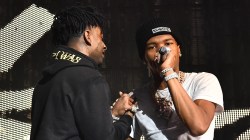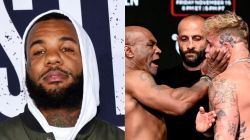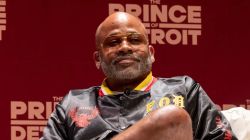MC Eiht is out to set the record straight on the craft that he played a large role in creating. As front man of Compton’s Most Wanted in the early 90s, Eiht helped usher in the era of West Coast gangsta rap that continues to bump across the airwaves of both sea boards.
Crediting the likes of NWA, Toddy T, Mix Master Spade and ex-rival, DJ Quik among others, he admonishes, “Eazy E brought it nation-wide and a lot of people got to step through the door because of that. So, it’s just a privilege to be mentioned as one of the people who upheld Compton.”
It’s been over a decade since MC Eiht and CMW made their presence felt with “Growin Up In the Hood” on the Boyz N the Hood soundtrack which hit number one on Billboard’s Hot Rap Singles chart the same week the soundtrack topped the R&B album charts. Since then, it’s been nothing but a “G thang” for successors of the initial gangsta rap phenomenon. Whether it is the popularity of G-Funk inspired Cali rap or the lasting effects from films like John Singleton’s Academy Award-nominated debut or 1993’s celebrated Menace II Society both of which Eiht made appearances in, the gangsta is a popular culture mainstay.
“A gangsta is just somebody who just keeps it in control and whose from the streets,” he confirms from years of experience as an ex-Tragniew Park Crip. “Someone who know how to hustle and got a way about themselves of not taking no slack. It just don’t mean killin’ and robbin’ and stealin’. It’s not all negativity.”

AD LOADING...
Take it back to 1988 when N.W.A. really started expressing themselves. The look and feel of gangsta rap was rebellious and real but remained at a comfortable distance to most of America. Stories were told of young men waging war against authority and amongst each other over turf and colors with the entertainment industry right there to capitalize on what had become the latest trend. In 1992, however, the LAPD attack on Rodney King and the ensuing L.A. Riots seemed to make everything that gangsta rap spit into suburban households across the country a more tangible reality. From there, things have escalated and perhaps culminated in the bi-coastal war between Tupac Shakur and Biggie Smalls resulting in both their deaths and tragedy for the hip-hop community.
“You know the negativity we’ve had in the past. Just everything. Everything we’ve experienced in hip-hop over the last twenty years with concerts and riots and beefs and all of that. Now to just kind of tone it down is what I’m saying”, pleads the emcee whose work as Compton’s Most Wanted front man helped move 636, 683 units between 1990 1992. “I think a lot of people that’ve been here have looked at hip-hop over the years have learned that negativity is not what’s going to keep us excelling.”
Clutching a cell phone in one hand and the steering wheel of his black ’99 Yukon in the other, the 30-year-old rapper rides through the streets of his hometown while elaborating on his point. “It’s that sound,” he begins with that familiar West Coast drawl. “For the people who enjoy artists like Shyne, Beanie Seagal, Scarface, MC Eiht, Three 6 Mafia, M.O.P., Mobb Deep. That type of music. We keepin’ it gangsta.”



